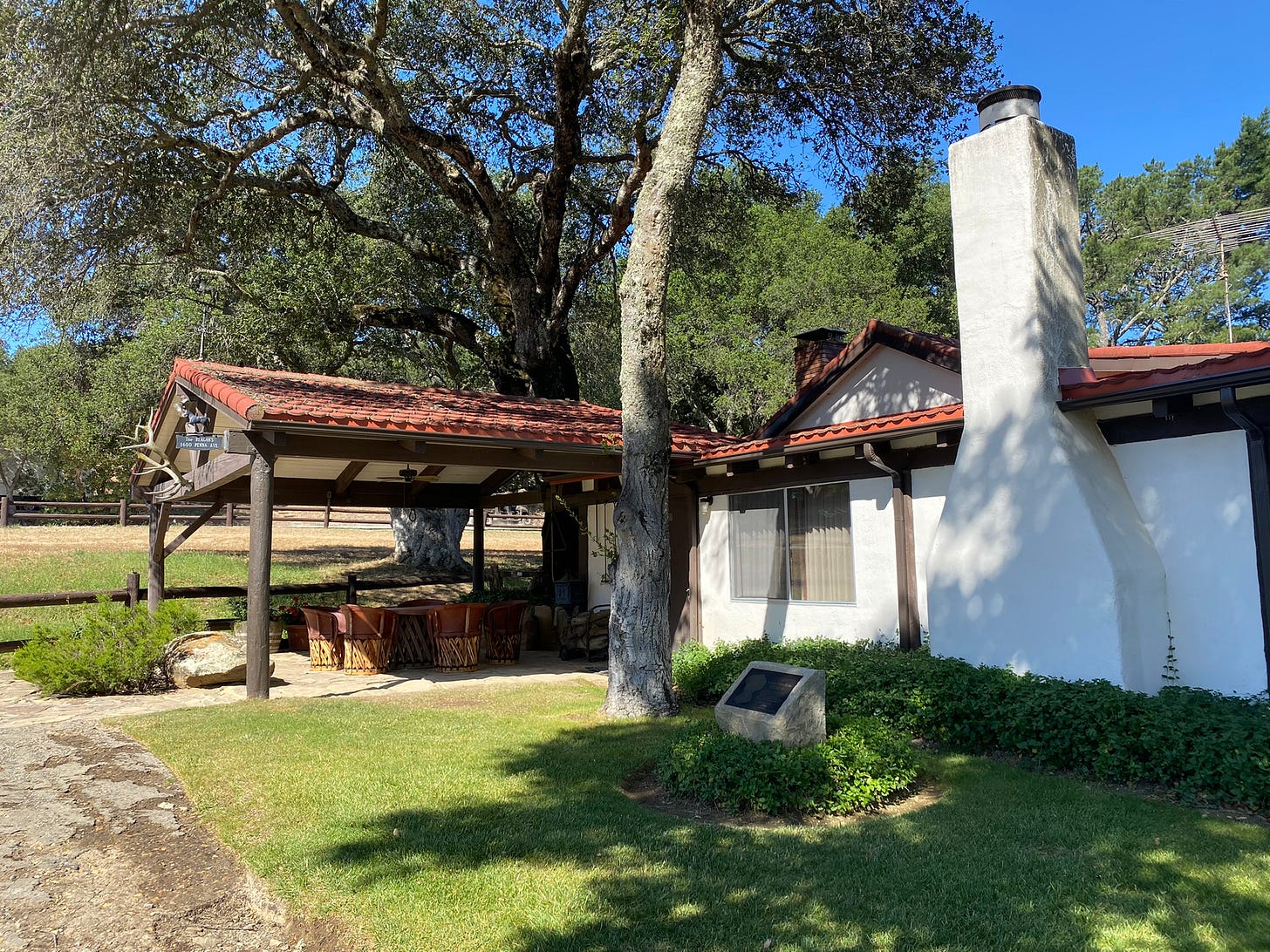Reagan’s Ranch house.
Last week, I was in Santa Barbara to give a talk at Young America's Foundation (YAF) conference for high school students. Since YAF takes care of the Reagan Ranch as part of its effort to preserve President Reagan's legacy for future generations, a YAF staff graciously offered to give some of us a tour.
Only two months ago, I visited President Reagan's boyhood in Dixon, IL, and was struck by his impoverished upbringing and the modesty of his home. I had imagined that the Reagan ranch had to be much more luxurious because the Reagans purchased this more than 600 acre property in 1974 when Reagan was the governor of California. A few years after, Reagan would become the President of the United States. From Hollywood to the White House, the Reagans definitely had the fame and power to make the ranch a lavish retreat for themselves.
The Reagans named the ranch Rancho del Cielo, which means "Sky Ranch" in Spanish. After Reagan became the President of the United States, the ranch became his sanctuary from Washington, D.C. The Press dubbed the ranch the "Western White House" because Reagan visited it often during his presidency.
The Ranch
The ranch sits on top of a hill (the elevation is about 2200-2500 feet) deep inside the Santa Ynez Mountains. It takes a narrow and winding road to get there, and the views of the peaks and valleys of Santa Ynez and the Pacific Ocean were breathtaking. After about half an hour of climbing uphill, our car pulled in front of a simple ranch gate saying, "Rancho del Cielo."
The gate to the Reagan Ranch
A short walk from the main gate didn't lead us to a grand mansion but a modest adobe ranch house. It was built in 1871, and later the Reagans enlarged it. Still, with only 1,500 square feet, the house is no presidential palace.
Reagan’s ranch house.
A pigskin-covered round table and four chairs sit on the house's front porch. The table was known as the "tax cut table" because it was on this table that President Reagan signed the famous Economic Recovery Tax Act (ERTA) in 1981, which cut individual marginal rates by 25 percent across the board, among other things. At the time, the Reagan tax cut was seen by many as "radical and unprecedented," but it laid the foundation for the country's decades of economic growth. According to the Heritage Foundation, Reagan's 1981 and 1986 tax cut acts "increased tax revenues from $500 billion to $1 trillion by the end of the 1980s... the rate cuts for the highest income brackets paid for themselves by encouraging work and investment."
The famous tax cut table.
Keep reading with a 7-day free trial
Subscribe to Confucius Never Said to keep reading this post and get 7 days of free access to the full post archives.







